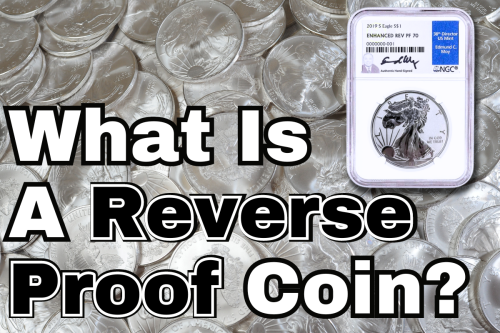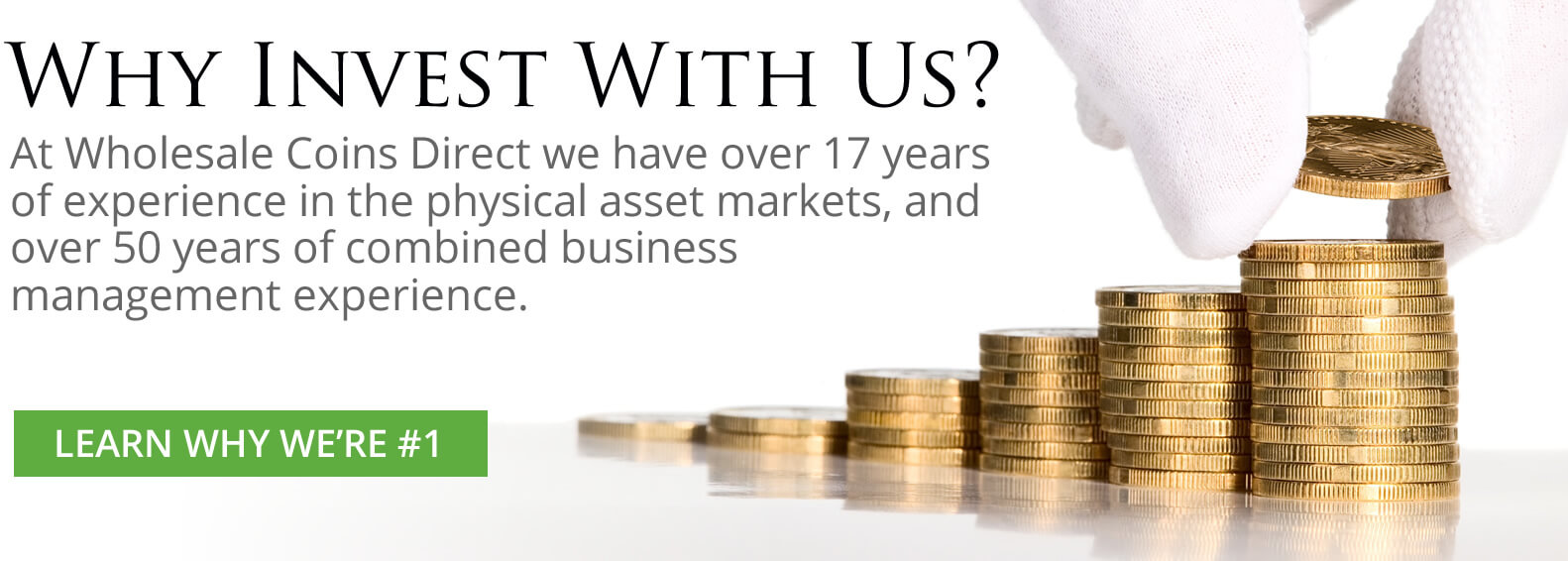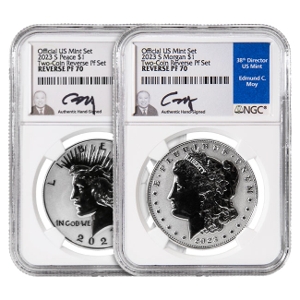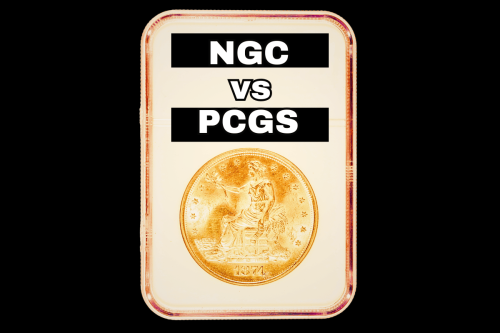
What Is A Reverse Proof Coin? | Learn About Reverse Proof Coins
You're looking to add to your coin collection, and you come across an intriguing type: the reverse proof coin. What is it? Should you add one to your collection?
A beacon for collectors, this distinctive variant not only enriches a collection but poses a delightful challenge in identification and acquisition.
Today we're diving into the world of reverse proof coins, uncovering the secrets of these numismatic jewels.
Understanding Coin Collecting
Before we get into the specifics of proof coins and reverse proof coins, it's a good idea to start with some basics of coin collection.
Coin collecting is a unique hobby that invites us into the world of history, art, and economics all at once. People collect coins for many reasons.
Some love the stories that old coins tell us about the past. Others enjoy the challenge of finding rare and valuable pieces. Whatever the reason, collecting coins can be a rewarding experience.
When you start collecting coins, you'll come across many different types. There are coins that we use every day for buying things. These are called circulation coins.
Then, there are coins made to remember special events or people, known as commemorative coins. Another interesting type is bullion coins. These are made from precious metals like gold and silver and are collected both for their designs and the value of the metal they contain.
Lastly, there are proof coins. These are special coins made with extra care to have a very shiny background and detailed designs. They are often made for collectors.
Understanding the types of coins is just the beginning. Collectors also need to learn about grading. Grading is how we describe the condition of a coin.
A coin in perfect condition is worth more than one that is worn out. Knowing how to grade coins helps collectors understand their value.
Collecting coins also involves learning about the precious metals they are made from. Some coins are valuable because they are rare. Others are valuable because they are made from metals like silver or gold.
Collectors often look for coins made from precious metals because they can be a good investment.
The Essence of Proof Coins
Proof coins hold a special place in the world of numismatics, which is just a fancy term for coin collecting. These coins are like the all-stars of the coin world, created not for everyday use but as collector's items. Let's dive into what makes proof coins unique and why they're so coveted by collectors.
Proof coins are made using a special process that gives them a mirror-like finish and incredibly detailed designs. This process involves polishing the coin blanks (the metal pieces used to make the coins) before they are struck and using special dies that are also polished and treated to create the coin's design.
The result is a coin that looks shinier and more detailed than regular coins.
The history of proof coins goes back centuries. Originally, they were made to check the dies used for coin production or to archive.
Over time, mints started producing them in limited quantities for collectors. Today, proof coins are highly sought after by collectors around the world.
Characteristics of Proof Coins
What sets proof coins apart is their appearance. The background of a proof coin is shiny and smooth, almost like a mirror. The design, on the other hand, is frosted, creating a stunning contrast.
This effect is achieved through the special minting process that involves striking the coin multiple times with high pressure. This not only gives the coin its distinctive look but also ensures that the design is incredibly detailed.
Proof coins are usually packaged and sold directly from the mint, often in protective cases, to preserve their condition. They are not meant to be spent but to be admired and collected.
Because of the extra care and effort that goes into making them, proof coins are usually more expensive than regular coins.
Introducing Reverse Proof Coins
In the world of coin collecting, reverse proof coins stand out for their unique beauty and craftsmanship. Unlike standard proof coins, which feature a shiny design on a frosted background, reverse proof coins flip this arrangement.
They have a frosted background with shiny, mirror-like designs and inscriptions. This creates a stunning contrast that catches the eye and makes these coins highly sought after by collectors.
The term "reverse proof" might sound complicated, but it simply refers to this inversion of the traditional proof coin finish.
History and Origin of RP Coins
Reverse proof coins are a relatively new addition to the numismatic world. They first appeared as a special issue from various mints around the globe. These coins were created not only to celebrate significant events or anniversaries but also to offer something different to collectors.
The first reverse proof coins were issued in the early 21st century, and they quickly became popular among collectors for their unique aesthetic appeal. Over the years, different countries have released their own versions of reverse proof coins, each with its own special design and significance.
The creation of reverse proof coins involves a specialized minting process. This process ensures that the coins have their distinctive frosted backgrounds and mirror-like raised elements.
The minting of these coins requires precise control and high-quality craftsmanship. As a result, reverse proof coins are often produced in limited quantities. This limited production, along with their unique appearance, adds to the desirability and value of reverse proof coins among collectors.
Collecting reverse proof coins has become an exciting aspect of the hobby. Each coin tells a story, not just through its design but also through the innovative minting process that brings it to life.
Whether commemorating historical events, celebrating national landmarks, or showcasing artistic achievements, reverse proof coins offer a fresh perspective on coin collecting. Their distinctive beauty and the skill required to produce them make reverse proof coins a fascinating subject for both new and experienced collectors.
Identifying Reverse Proof Coins
Reverse proof coins are treasures in the coin collecting world, each with its own unique charm and beauty. To identify these coins, there are specific features you should look for.
Unlike the usual shiny background with frosted designs found on standard proof coins, reverse proof coins boast a striking contrast with their frosted backgrounds and mirror-like designs. This inversion makes the designs and inscriptions pop, giving the coins a distinctive eye-catching look.
One of the most noticeable characteristics of reverse proof coins is their exceptional detail. Because of the careful minting process, every tiny element of the design is sharp and clear.
This level of detail is not only beautiful but also a sign of the coin's authenticity and quality. The mirror-like parts of the coin should be smooth and unblemished, while the frosted areas should have a uniform, matte finish.
How to Spot Reverse Proof Coins in the Wild
Finding reverse proof coins "in the wild" - outside of coin shops or formal collections - can be a thrilling experience for collectors. To spot these coins, pay close attention to their distinctive finishes.
The contrast between the frosted background and the shiny design elements is a key indicator. Lighting plays a crucial role in identifying these coins; under direct light, the designs will reflect brightly against the subdued background.
Another tip for spotting reverse proof coins is to familiarize yourself with the specific series or issues that have been released in reverse proof. This knowledge can help you narrow down your search and make it easier to identify these coins when you see them.
Remember, reverse proof coins are often issued in limited quantities for special occasions, so being aware of these releases can give you an advantage.
It's also important to handle coins carefully and use a magnifying glass to examine the details closely. This can help you appreciate the fine craftsmanship of reverse proof coins and confirm their authenticity.
However, be wary of coins that look too perfect or have an unusual appearance, as they could be counterfeit. Always verify the authenticity of a coin with a reputable dealer or grading service if you're unsure.
Collecting Reverse Proof Coins
Collecting reverse proof coins is a journey that blends the love of beauty with the thrill of the hunt. These coins are not just pieces of metal but works of art that carry deep historical and cultural significance.
One of the main reasons collectors are drawn to reverse proof coins is their unique aesthetic. The frosted background and mirror-like designs create a visual appeal that stands out in any collection.
These coins capture the light in a way that highlights their intricate details, making them a favorite among those who appreciate the finer aspects of numismatics.
Another compelling reason to collect reverse proof coins is their rarity and potential value. Because they are often issued in limited quantities for special occasions or anniversaries, finding them can feel like uncovering hidden treasure.
This scarcity can make reverse proof coins more valuable over time, both financially and as collector's items. For collectors, owning a piece that is both beautiful and rare offers a sense of accomplishment and pride.
Tips for Collectors
For those interested in adding reverse proof coins to their collections, there are several strategies to consider. First, stay informed about new releases and special editions from mints around the world.
Subscribing to newsletters, joining collector's clubs, and participating in online forums can provide valuable information about upcoming releases and hard-to-find pieces.
When acquiring reverse proof coins, it's important to focus on quality and authenticity. Purchasing coins from reputable dealers or directly from mints can reduce the risk of buying counterfeit items.
For those looking to buy coins from other collectors or at auctions, conducting thorough research and asking for certification can help ensure the coins' authenticity.
Caring for reverse proof coins is crucial to maintaining their condition and value. These coins should be handled sparingly and with clean, soft gloves to prevent fingerprints or damage.
Storing them in appropriate holders or cases that protect against dust, humidity, and direct sunlight will keep them looking their best for years to come.
Reverse Proof Coins in Precious Metals
Silver reverse proof coins are a highlight in the world of numismatics, blending the allure of precious metal with the exquisite craftsmanship of reverse proof minting. Silver, known for its beauty and affordability compared to other precious metals, makes these coins particularly appealing to a wide range of collectors.
When it comes to silver RP coins, the shimmering contrast between the frosted and mirrored surfaces is especially striking, showcasing the intricate details of each design. Collectors cherish these coins not only for their aesthetic appeal but also for their potential to appreciate in value over time.
Notable examples include special edition releases and commemorative issues that celebrate significant events or anniversaries.
Other Precious Metals
While silver stands out for its popularity and accessibility, reverse proof coins are also minted in other precious metals, such as gold and platinum. These coins elevate the collector's experience by offering an added layer of luxury and investment potential.
Gold reverse proof coins, with their rich luster and historical significance, appeal to collectors looking for items with enduring value. Platinum reverse proof coins, though less common, attract those interested in unique and rare pieces. The choice of metal impacts not only the coin's appearance but also its market value and collectibility.
Each type of metal brings its own qualities to the reverse proof coin, from the vibrant shine of silver to the prestigious glow of gold and the modern appeal of platinum.


Add the Reverse Proof Coin to Your Collection!
In the intricate world of numismatics, the reverse proof coin stands as a testament to the art of minting.
Its unique allure captivates collectors, offering a glimpse into the meticulous craftsmanship and history behind each piece. These coins not only enrich collections but also celebrate the enduring legacy of coin collecting.
At U.S. Gold Bureau, we've provided both new and seasoned investors with more than $2 billion in precious metals since 2003. Get our free precious metals investor guide today!









